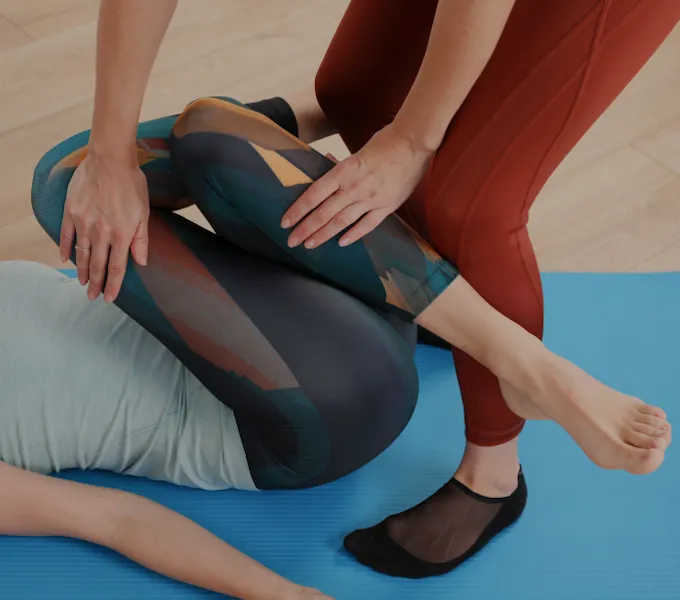
What is a Pessary and Do I Need One?
While a pessary can look and sound intimidating (or weird, or downright scary), it's an important tool for many women to reduce pelvic floor symptoms and allow them to safely become more active.
The most common reason that we recommend a pessary for our patients is to address symptoms of vaginal heaviness and/or urinary or fecal leaking caused by pelvic organ prolapse. Prolapse is a condition in which one or more of the pelvic organs (bladder, uterus, and rectum) collapse towards the vaginal opening and cause a bulge in the vaginal wall that you can see or feel. This is often due to a lack of passive support from ligaments and connective tissue (something we cannot control in our own bodies) and active support from the pelvic floor (which we can). It occurs in up to 66% of postpartum women (Vergeldt 2015). Pregnancy is the leading risk factor for prolapse, regardless of vaginal or cesarian delivery, because of the stretch it applies to the passive support of the pelvic organs over time (Vergeldt 2015).
It is important to assess the active support to the pelvic organs provided by the pelvic floor, to determine whether pelvic floor muscle strengthening is needed. Pelvic floor physical therapists also provide education regarding safe exercise and how to engage your deep core muscles appropriately to reduce downward pressure on a prolapse with daily activities - especially childcare! However, for many of our clients who are experiencing symptoms of heaviness or urinary incontinence, we recommend the use of a pessary to improve passive support immediately and reduce long-term issues.
A pessary is fit to each individual by a physician's office, and is often covered by insurance. They are made of medical grade silicone, and can be worn for several days at a time if desired. The most common shape is a ring, which is folded in half to insert and remove and provides outward support against all sides of the vaginal wall. A pessary can take a bit of time to get used to, but by providing this support, it can reduce or eliminate feelings of vaginal heaviness and leaking.
Recently, over-the-counter versions of bladder supports have become available without a visit to the doctor. Poise Impressa is a disposable, 8 hour use bladder support that is inserted using a tampon-like applicator (sold by US retailers). Incostress is made of silicone and reusable (sold online from a UK-based vendor).
A common question about the use of pessaries is whether using one can reduce or eliminate prolapse in the long term. A study of women with advanced prolapse using a pessary alone showed resolution of more than half of prolapse and urinary symptoms while it was in use (Ding 2016). However, this study was only three months long and the participants were using the pessary consistently during that time. Finally, another study of women with mild to significant prolapse showed that the group using a pessary in addition to pelvic floor muscle training had greater improvement than the group that did physical therapy alone, although both improved significantly (Cheung 2016).
Ultimately, it is unclear about whether using a pessary in the short term can reduce prolapse in the long term if use is discontinued. However, pessaries have been well-established as a safe and effective companion treatment to pelvic floor muscle training for the best results in the short term. We often recommend to our clients that they use a pessary as long as it is comfortable and feels effective in addressing symptoms of heaviness or leaking. If someone is working on building pelvic floor muscle strength and coordination, a pessary can be effective immediately to improve symptoms while muscles are responding to the exercise program. If someone has symptoms throughout the day, wearing a pessary consistently is likely the best option. If symptoms only occur with running, hiking, etc. then often we will recommend at least using the pessary in those situations to reduce the risk of symptoms occurring.
If using any product (prescribed or over-the-counter) is painful, we recommend discontinuing use and talking to your doctor or pelvic PT. You may be experiencing sensitivity of the vaginal walls due to low estrogen levels when lactating, or muscular dysfunction that can cause pain. You may also need to try a different shape or size of pessary to better fit your anatomy.




